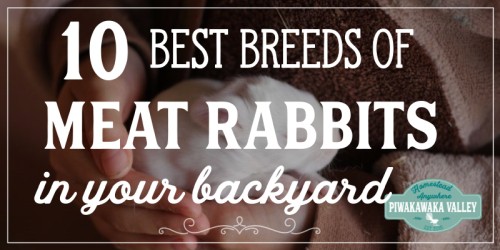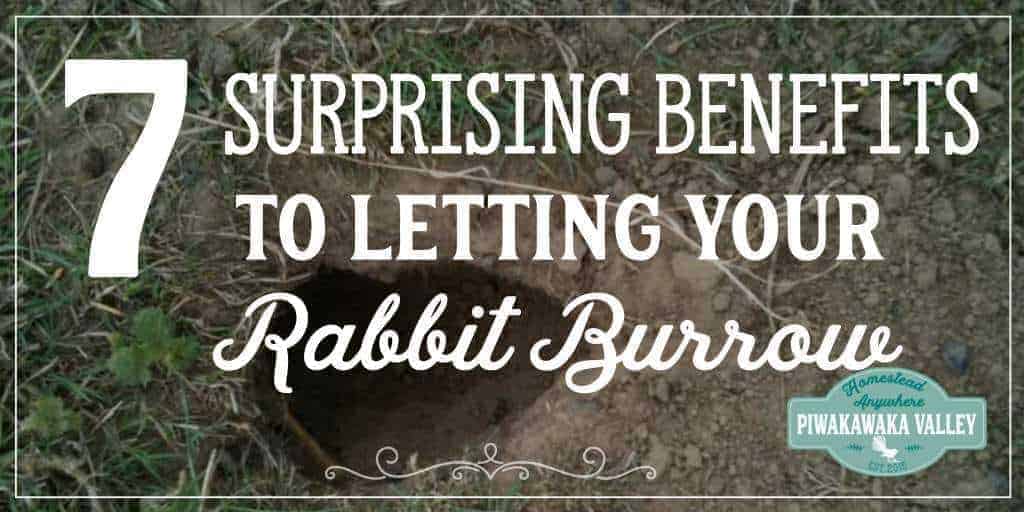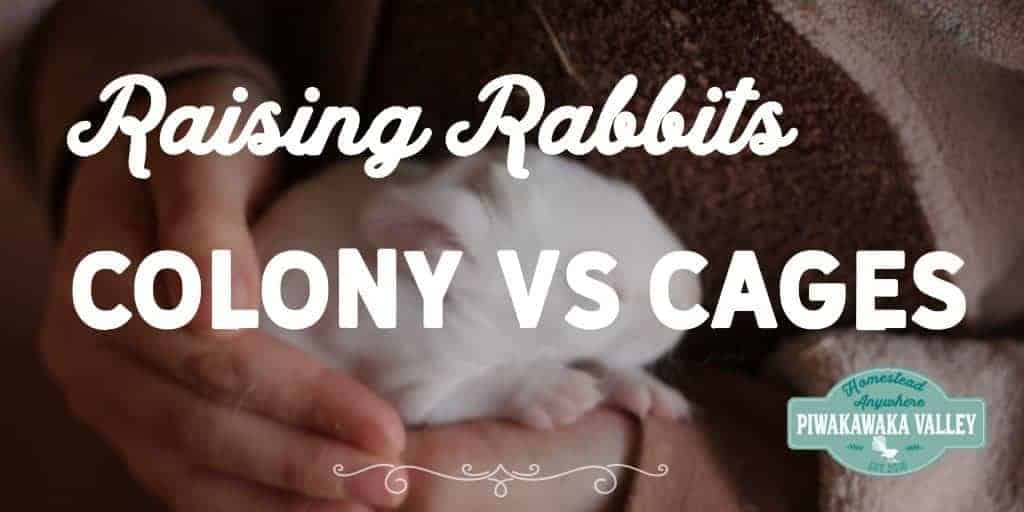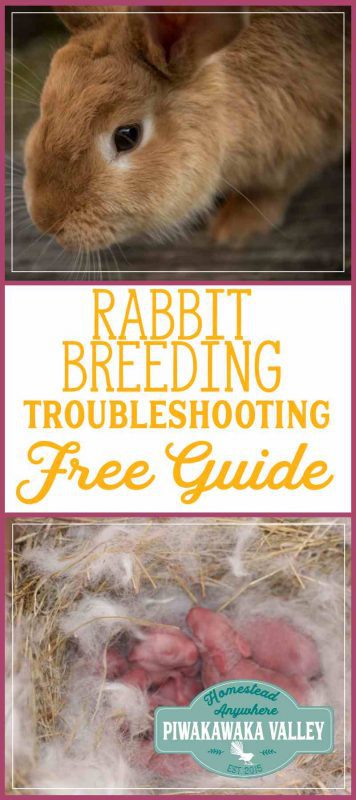This post was most recently updated on July 27th, 2021
Raising animals is a fickle business and rabbits are no exception. Many people have rabbit breeding problems, the most commonly asked question is “Why won’t my rabbits breed?”
Please read: This information is provided for educational purposes only and is not intended to treat, diagnose or prevent any disease. We encourage you to make your own health care decisions in partnership with a qualified health care professional.
This post contains affiliate links, this means at no extra cost to you, we make a commission from sales. Please read our Disclosure Statement
Below are common and not so common issues you may face and some suggestions that will save your bacon.
WARNING: This diary discusses slaughtering and processing rabbits for human consumption. If this topic disturbs you, please do not proceed.
Rabbit Breeding Problems
There are many causes for rabbit breeding problems, despite what you might have heard rabbits don’t always breed like rabbits. They need the temperature to be right, and for the female to be receptive, and for the buck to be healthy and not feeling picked on by his doe.
Why won’t my rabbits breed?
The old saying ‘breeding like rabbits’ doesn’t always play out the way we would expect. Does will sometimes refuse to be bred, or worse attack and castrate the male. Bucks will forget what they are supposed to be doing and go in for a cuddle instead.
Want to know all about raising rabbits in a colony?
Check out our very own book here:
Available on Kindle and in paperback or from our store
My Doe Refuses to Be Bred or Won’t Lift for the Buck
If you are keeping the buck separate from the does and arrange matings so you can choose when they are due, or choose who breeds with who then when you bring the doe to the bucks cage, she doesn’t always oblige and lift for a successful mating to occur.
RELATED: how to successfully breed rabbits and raise kits
Symptoms
Doe chases/humps/won’t lift for the buck.
Doe won’t breed and isn’t interested in breeding
Doe attacks the buck viciously.
Doe runs away from the buck or is happy just to snuggle.
Solutions
- Check the does vent – if it is light coloured pink/white and dry she is not ready to be bred. Although rabbits are what are called ‘induced ovulators’ which means they release eggs after breeding, they still have a hormone cycle and are more receptive some days within that 14-16 day cycle. If bred when their vent is light pink/white they have only a 10% chance of conception, if they are bred when their vent is red/purple they have a 90% chance of conception, so it is best to aim for the fertile days.
- Ensure you are bringing the doe to the bucks cage, not the other way around. If the buck goes to the does cage they spend the whole time working out who is boss rather than breeding.
- Take the doe out of the bucks cage and return her again either the next day or two days later.
- If you have tried every day for 7 days and not witnessed a breeding – they are fairly obvious the buck usually dramatically falls off when he is finished, then try a tablespoon of apple cider vinegar in a bucket of water, and use that in both the buck and the does water for 2-3 days then try breeding again.
- Check and recheck the gender of your rabbits. The sex-change fairy has struck even the most experienced breeders. If you aren’t certain, ask your vet to check for you.
- Give your rabbits a top to toe health check to make sure you aren’t missing anything.
- Also check that your rabbits aren’t overweight, fat rabbits don’t breed. Put them on a hay and water only diet for a week or two and try again.
- Check the light – rabbits need 12-14 hours of daylight to be optimally fertile, you can add an extra lamp on a timer on in their quarters to increase their exposure to light.
- Ensure your rabbits are getting a varied healthy diet including alfalfa/lucerne for its vitamin A and E content.
- Check the ambient temperature – If it is the heat of summer or the middle of winter you might find that your rabbits take a self-imposed breeding break. Traditional breeding times for most animals are Spring and Autumn/Fall and rabbits are no different.
- Some breeding combinations just don’t work, you might be better off trying a different buck.
My Buck isn’t interested in the Ladies
- Check to make quite sure he is a buck.
- Is he old enough yet? While some bucks can technically breed from 12 week, most aren’t all the interested until they are 6 months, and some are closer to a year before they really get going.
- Is the breeding space small enough that he can catch the does, some ladies play hard to get.
- Add some Apple Cider Vinegar to his water and add Ginger, Parsley, and or Raspberry leaves to his diet for a few days to boost his fertility.
RELATED: feeding rabbits without pellets
My Doe is Acting Pregnant But There Are No Babies
Symptoms
Refusal to be bred/attacking the buck
Getting fat/round
Acting grumpy/aggressive
Nest building
No babies in the belly or in the nest
Solutions
For one reason or another your doe has ovulated and created a corpus luteum (normal) which produces progesterone to support a pregnancy, but didn’t actually fall pregnant. So she is getting all the hormone signals that she is pregnant, without actually growing babies.
These will resolve all by themselves after 2-3 weeks, just don’t try and breed her in this time or she might attack the male, or you.
- If a doe has phantom pregnancies more than twice I would suggest she is not productive breeding stock and you should cull her.
- Very rarely these symptoms can be due to uterine cancer or a naturally terminated but not aborted pregnancy, the babies should be re-absorbed by the body, but sometimes can calcify and harden or get infected. In a purely meat breeding program, these does would be culled. For a pet rabbit the doe may undergo a hysterectomy removing the problem tissue but leaving her sterile.
- If you are quite sure the mother is pregnant, give her until 40 days to give birth, it is rare but it does happen. If you get to day 40 and still no babies, return her to the buck. Or if they are in a colony, don’t even worry about it, she is probably re-bred already.
RELATED: what to do with a sick rabbit
My Doe is in Labour but Something is Wrong
Has the labour stalled, a kit got stuck or placenta retained?
You could take a trip to the vet if you are immediately worried. If the doe doesn’t seem stressed you could try Blue Cohosh, or Lavender.
Start with 2 leaves or 1/4t dried leaves of blue cohosh or a small amount of lavender flowers every hour and see if it stimulates things to get going again.
A little sweet water with some sugar or honey in it will give the mama some renewed energy.
My Doe had her Kits Out of the Nest
This is a common problem with first time mothers. It is less common with mothers that are bred young – 16+ weeks.
If the kits are cold and seem dead, don’t give up yet. Bring them inside and either put them down your top, on a warm hot water bottle or heating pad or in an open ziplock bag in a bowl of warm water.
Kits aren’t dead until they are warm and dead. Give them a rub and see if you can encourage them to come around. If they have blood visible in their nails and they are still dead, they are actual dead.
Sorry, but you can’t fix dead.
Pop the mother back in with the buck and get her re-bred. Hopefully she will have it sorted next time.
Often you lose the first 1-2 litters before they work it out. If she does it a third time, I suggest you remove her from your breeding program, maybe add her to your cooking program instead.
My Doe Ate Her Kits
Symptoms
Missing kits/nest full of blood
Pieces of kits only found
Kits found missing limbs/ears/large body lacerations
Solutions
First time does may kill and eat their young for a number of reasons, including nervousness, neglect (failure to nurse), and severe cold.
Dogs or predators entering a rabbitry often cause nervous does to kill and eat the young. Cannibalism of the dead young also occurs as a natural, nest-cleaning instinct.
Sadly first/second time mothers sometimes get overly enthusiastic about cleaning their new babies and can severely damage or kill the delicate new kits. More on cannibalism here.
- Keep the mother feeling safe – in a quiet, predator free area.
- Minimise your interruptions to the nest for the first week.
- You will have to humanely dispatch any severely injured kits.
- Kits with simple wounds can be kept clean, with antibiotic cream applied twice a day. Many kits survive missing an ear or a foot quite happily.
- Lacerations can be closed with superglue. Kits heal remarkably fast when the wounds are kept clean.
- Kits can be ‘shelved’ to keep them away from the mother. This involves bringing the nesting box into a safe area, only returning it to the mother twice per day for feeding.
- If all management practices are proper and the doe kills 2 litters in a row, she should be culled.
I Don’t Think My Doe is Making Enough Milk
Hand rearing babies seldom works, so if there are too many in a litter (most mums will struggle to feed more than 10.
You have a couple of options
1) Mercy-kill the weakest
2) Foster on some of the bigger ones to another litter
3) Shelve the kits, and feed the smaller ones first the first few times or
4) Attempt to hand raise some.
Herbal options to increase and support the mama’s milk production include Oats, Borage, comfrey, dandelion, Goats Rue, Milk Thistle, Nettles. Make sure your doe has as much food and fresh water that she wants.
My Doe Lost all Her Kits
Do you have any kits you could give her to surrogate? If not you can dry up her milk by feeding her sage and mint.
If she has too much milk and nothing draining her, she will get mastitis. Re-breeding her will reduce her milk production fairly quickly too.
Terms:
Cull – to remove from the breeding program
Vent – the external female genitalia, also known as the vulva
Castrate – to damage or remove the genitalia so they can no longer breed
Do you have any tips or tricks you can share? Let me know in the comments below!
Please pin and share with your friends!









